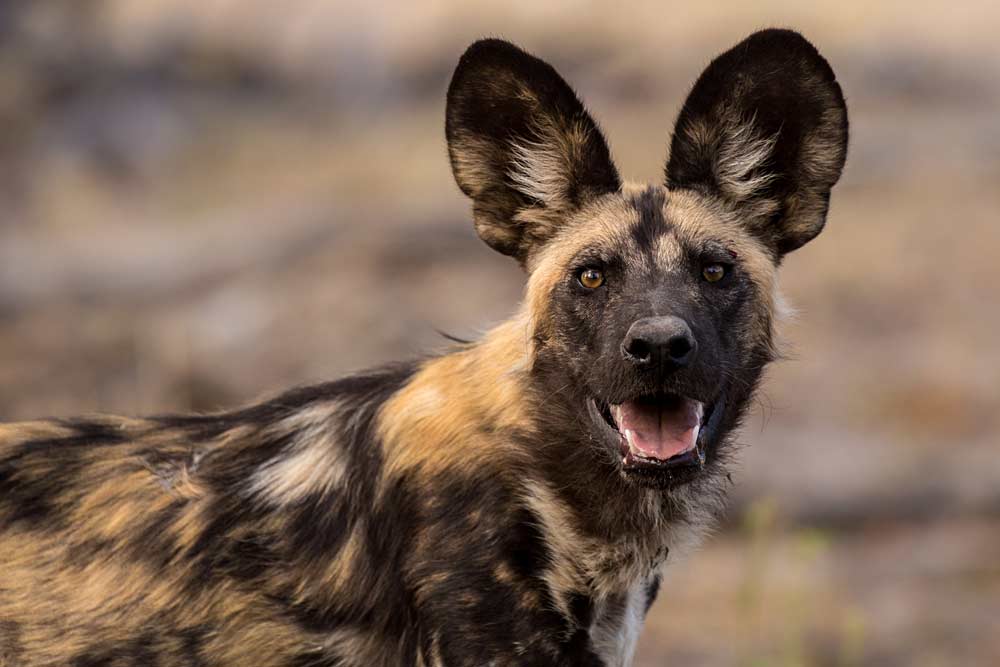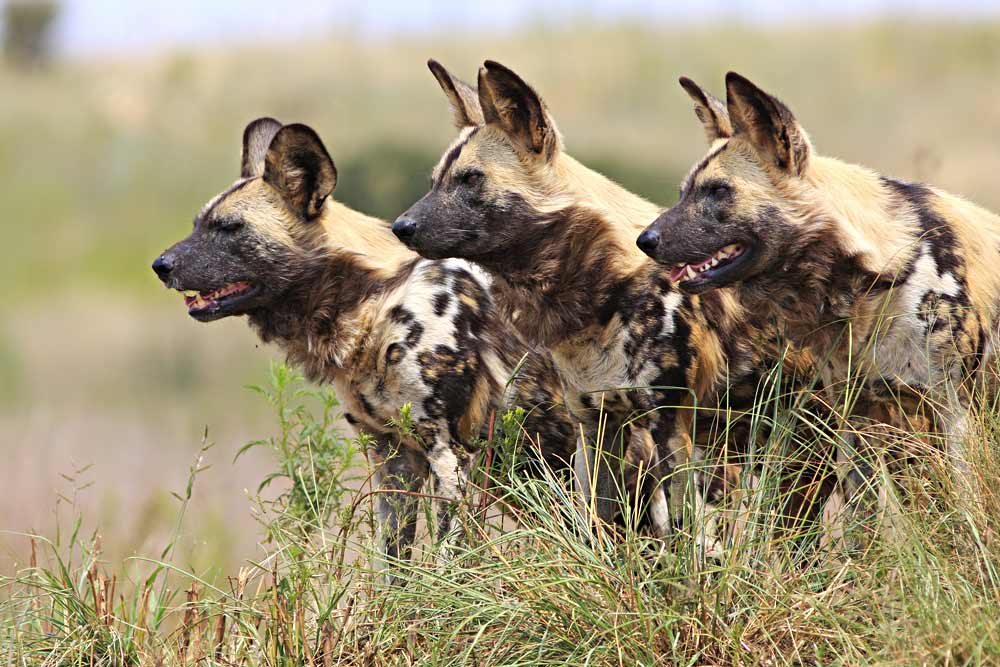African wild dogs, also known as painted wolves or Cape hunting dogs, have seen drastic population declines over recent decades. In this article from 2017, we looked at Kenya’s efforts to save the African wild dog from extinction, and discovered how these endangered animals are beginning to recover here.

Painted wolves in the morning
The early mornings are celestial on the Athi Plains about an hour’s drive south of Nairobi. Clear blue skies, cloud free; rolling savannah backed by quartz-glinting hills. Far away the occasional gleam of the ‘Lunatic Line’, the colonial railway track that winds all the way down to Mombasa. And, if you’re very lucky, there might be a guest appearance by Mount Kilimanjaro. Silver grey, she appears and disappears like a vast pink mirage; a giant Christmas pudding lilac-topped with snow.
The ideal territory for African Wild Dogs
There’s a plaintive keening of hornbills and the bubbling coo of the emerald spotted wood doves. But this is no national park. Not even a reserve or a conservancy. It’s just a vast swathe of land once teeming with wildlife, later converted to sprawling colonial cattle ranches. But both are gone now. Africa has taken back her own and now the Athi Plains are just mile upon mile of scrubby bush punctuated by an ever-increasing number of settlements. They do, however, provide ideal territory for African wild dogs, or ‘painted wolves’.
The ears arrive first, pricked in the long grass. Round and black like so many radar dishes. Heads appear. Then there’s a cautious peering and sniffing. A decision is communally made: two humans walking in the bush don’t present a threat. And the pack of wild dogs emerges.
The liquid pack
At first you wonder if it’s a pack of mongrel dogs. Then you realize that mongrels don’t look like this. They’re not so rangy, so watchful, so much of a cross between a wolf and a hyena. Nor are they painted in such fantastic colours, splashed with rust and white; dripped with black and grey – a gorgeous hybrid print of wildebeest and leopard. And domestic dogs don’t move with one accord, flowing over the landscape as if all part of the same organism.
The wild dogs don’t stay long. They’re on a mission of their own. The signal is given and the liquid pack, now an amorphous mass of black, brown and rust so brilliantly camouflaged that it appears like a brief shadow on the landscape – is gone.

Under threat across Africa
But we have been immensely privileged. The African wild dog (Lycaon pictus) is one of the most endangered creatures on the planet. According to the International Union for Conservation of Nature, there remain only around 6,000 across the entire African continent. And their numbers are plummeting. It’s not just that these whimsically beautiful beasts are affected by diseases such as rabies or canine distemper, both of which are passed on to them by domestic animals; or that their range has been radically encroached upon by man. It’s also that farmers across Africa are killing them in the belief that the dogs have killed their livestock. In reality, however, wild dogs typically hunt only wild animals.
But there’s a greater threat: recent research has revealed that the African wild dog is being threatened by climate change. A group of scientists from the Zoological Society of London, the University of Johannesburg and the Botswana Predator Conservation Trust contend that rising global temperatures have affected the dogs’ ability to hunt and, by inference, to produce healthy pups. Extinction looms.
Kenya’s efforts to save African wild dogs
In Kenya, however, there is hope. The Kenya Rangelands African Wild Dog and Cheetah Project has devoted over 15 years to concocting a cocktail of measures designed to allow the African wild dogs to survive in a human-dominated landscape. Domestic livestock has been inoculated against rabies and pastoralists have been taught how to construct more efficient bomas (pens) for their livestock. They’ve also been encouraged to revert to the old ways of land use whereby land is set aside for dry season grazing thus leaving areas in which the dogs can run free. Farmers have also been persuaded to donate land for ‘wildlife corridors.’ And in return they’ve been given a share in the proceeds of tourism that the wildlife attracts.
Outreach programmes have been established to monitor the movement of the dogs by means of radio tracking collars or scouts. And local herders are alerted to the fact that a pack of wild dogs are in the neighbourhood and that their vigilance should be increased.
The results have been startling. Over the last decade the numbers of African wild dogs in the Samburu-Laikipia region have increased eight-fold. This is good news. Because not only does the wild dog provide a supreme example of the efficiency of the pack – which works with one accord and for the good of all – but also because the wild dog can trace its ancestry back 40 million years to a creature known as Miacis, which was the ancestor of all wolves and foxes. And, of course, of ‘man’s best friend’ the domestic dog.
For further information, visit the Kenya Rangelands Wild Dog and Cheetah Project website
© 2025 Kenya Holidays
